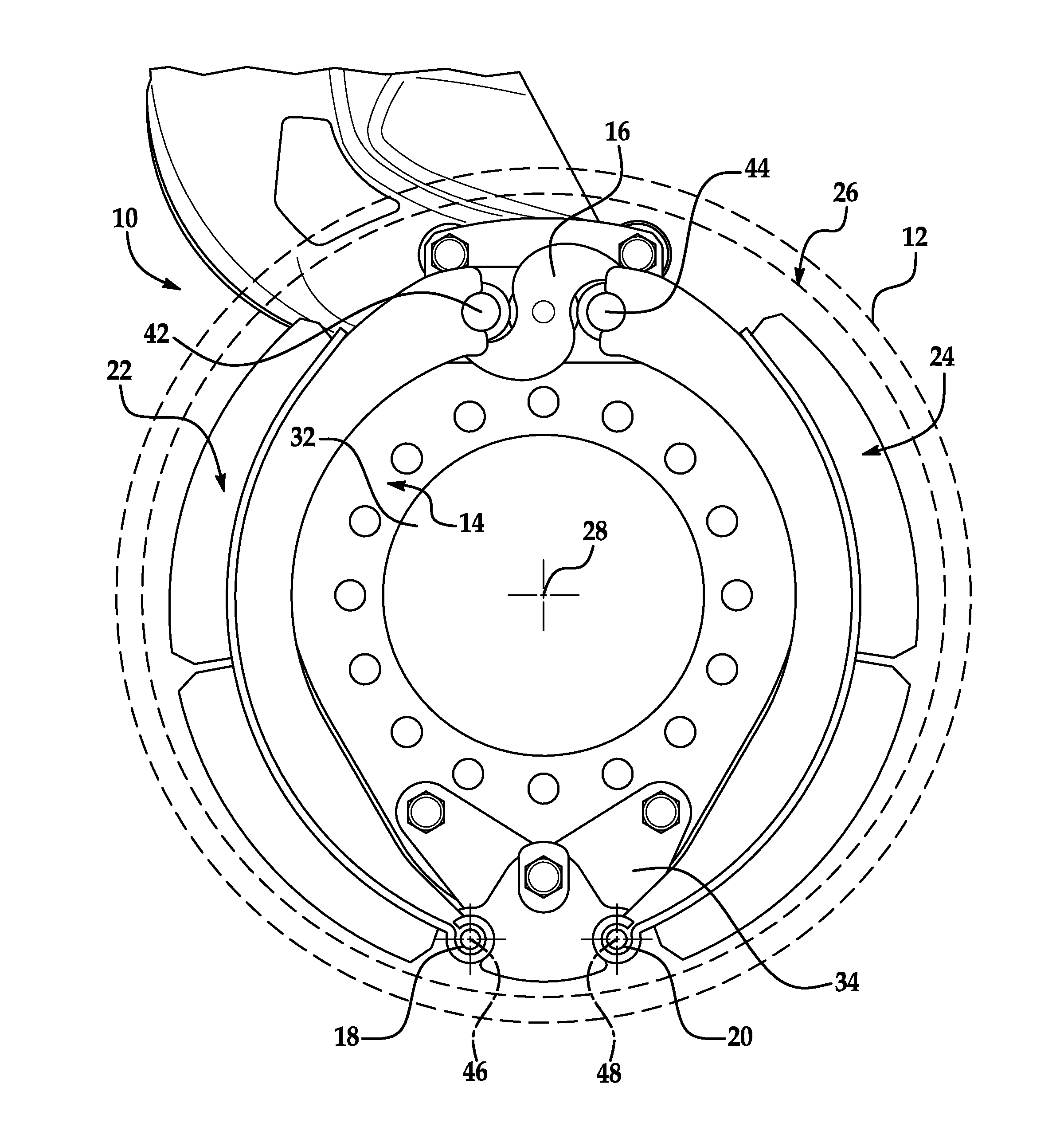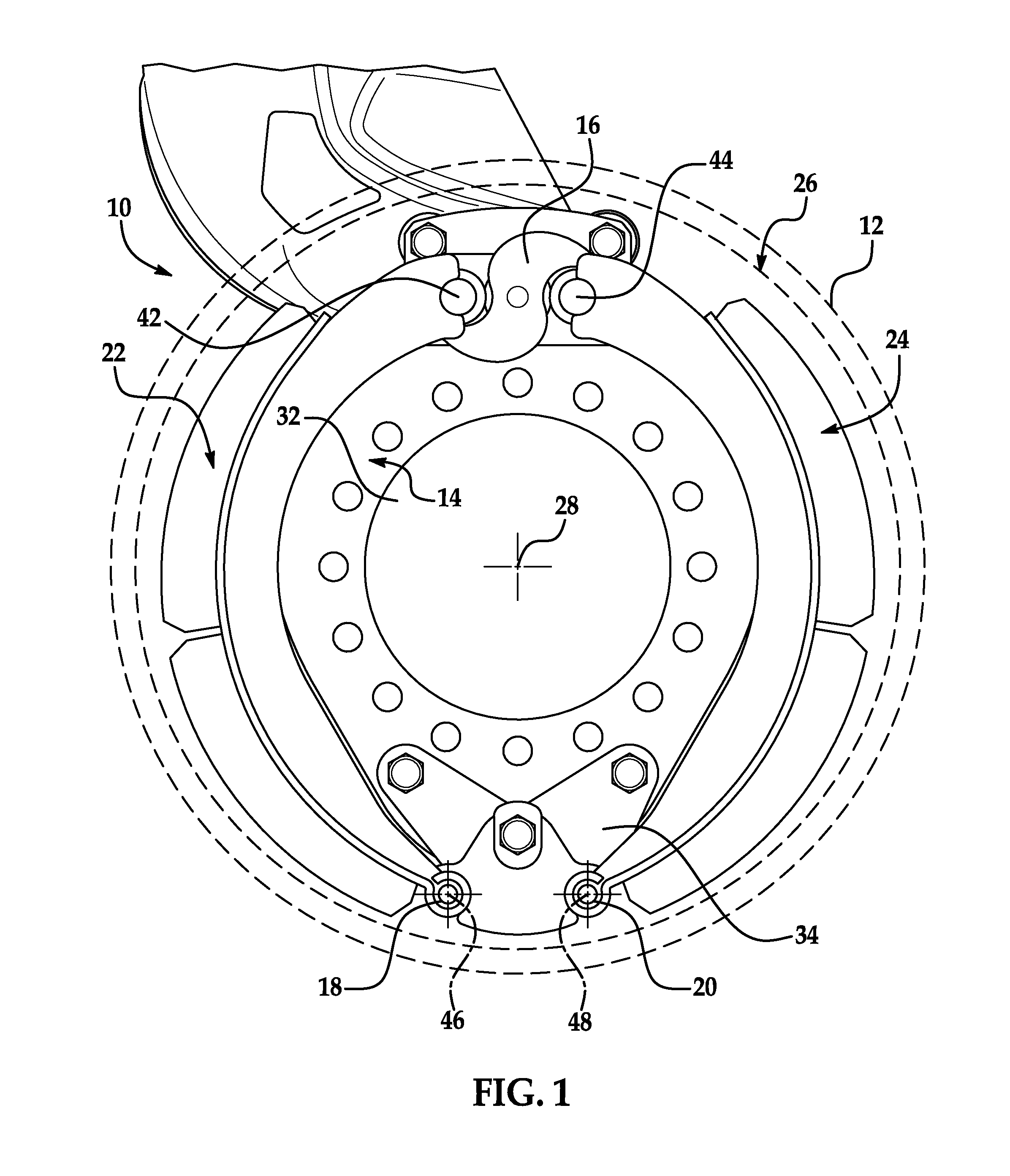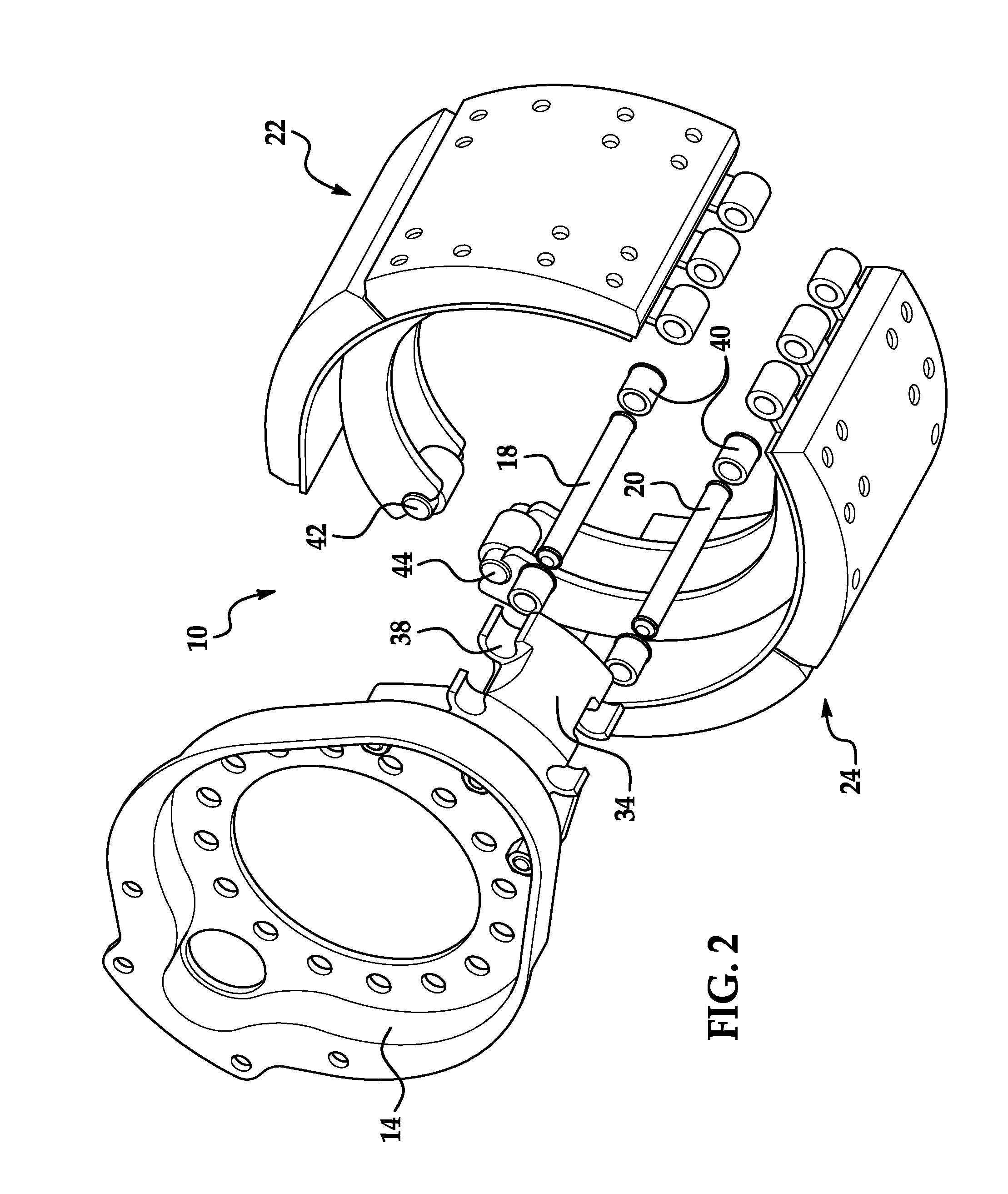Hinged table brake shoe
a brake shoe and hammer technology, applied in the direction of drum brakes, braking elements, braking members, etc., can solve the problems of uneven braking force applied, uneven braking force application, inconsistent brake dynamics, control and performance of drum brakes, etc., to achieve more consistent brake dynamics, control and performance
- Summary
- Abstract
- Description
- Claims
- Application Information
AI Technical Summary
Benefits of technology
Problems solved by technology
Method used
Image
Examples
Embodiment Construction
[0017]Referring now to the drawings wherein like reference numerals are used to identify identical components in the various views, FIGS. 1-4 illustrate a brake assembly 10 in accordance with one embodiment of the present invention. Brake assembly 10 is particularly adapted for use in heavy trucks. It should be understood, however, that brake assembly 10 may be used on a wide variety of vehicles and in non-vehicular applications. Brake assembly 10 is configured to act against a brake drum 12 (shown by phantom lines) and may include a brake spider 14, an actuating member 16, anchor pins 18, 20 and a pair of brake shoes 22, 24. Brake assembly 10 may also include other conventional components not discussed in detail herein including, for example, mounting brackets and hardware and an adjuster.
[0018]Brake drum 12 provides a braking surface 26 and is conventional in the art. Drum 12 may be made from conventional metals and metal alloys such as steel or cast iron. Drum 12 is annular and r...
PUM
 Login to View More
Login to View More Abstract
Description
Claims
Application Information
 Login to View More
Login to View More - R&D
- Intellectual Property
- Life Sciences
- Materials
- Tech Scout
- Unparalleled Data Quality
- Higher Quality Content
- 60% Fewer Hallucinations
Browse by: Latest US Patents, China's latest patents, Technical Efficacy Thesaurus, Application Domain, Technology Topic, Popular Technical Reports.
© 2025 PatSnap. All rights reserved.Legal|Privacy policy|Modern Slavery Act Transparency Statement|Sitemap|About US| Contact US: help@patsnap.com



